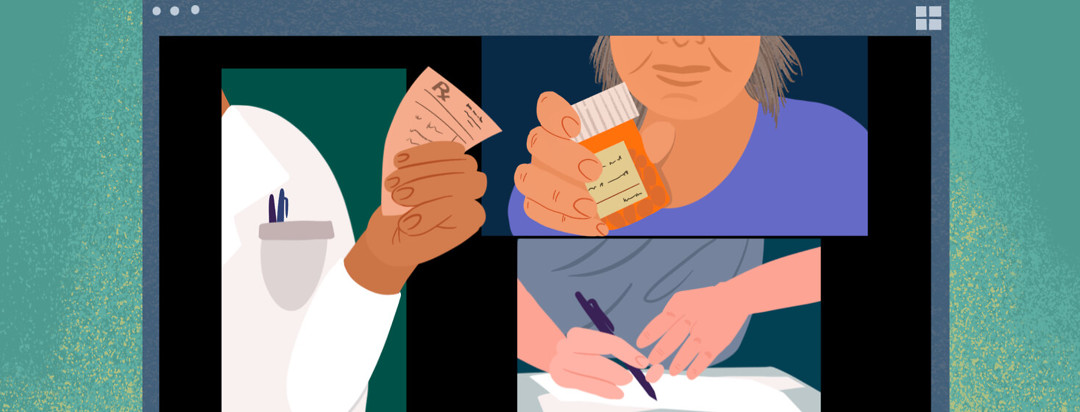Long Distance (Virtual) Caregiving: Staying Connected
When someone you love is sick, it can cause stress and anxiety. Illness, especially Parkinson's, can take a physical and emotional toll on caregivers and family, particularly when they are far away. For everyone dealing with a Parkinson's diagnosis, there is generally worry and uncertainty.
Around 7 million people in the US today are caregivers; nearly 20 percent perform this role long distance. As baby boomers continue to age, the number of caregivers is projected to increase significantly in the coming years. Developing strategies to partner in caregiving can help families stay involved with the progression of treatments, and ease the varied burdens of a Parkinson's diagnosis on families.
What is caregiving?
Caregiving describes the time and attention needed to care for relatives or friends when they require additional support caring for their own needs. Help provided can take different forms; it may include everyday tasks like grocery shopping, transportation, and meal preparation. It can also encompass managing medical appointments and household finances, and full-time personal care. Caregiving is generally unpaid, done out of love or sometimes a sense of obligation.
Caregivers can come from different places: a husband, wife, or partner, a child, parent, or sibling, other relatives, friends, even neighbors. Someone close to the patient is the most important non-medical member of the care team. Yet the fears and urgency of caring for someone so ill can take a physical, psychological, and financial toll on caregivers and their own families.
Caregiving can take its toll
Caregivers often experience physical and psychological side effects when caring for a family member or friend. Studies have shown that those who provide informal, unpaid care to someone with significant limitations to their independence can experience a negative impact on their own health and personal lives.2 For example, some people don’t take the time to eat right and exercise; this may result in both weight gain and mood disturbances. Others may find they don’t have the time for a social life or to participate in their regular leisure activities.
Long distance caregivers
Those who live far enough away that they are unable to have daily, face to face interactions with their relatives are known as long-distance caregivers. Caregiving can be more complex when distance, time, cost, and other factors limit accessibility. Factors like work, family, and transportation can affect the ability to sustainably provide care. Communications from long-distance caregivers can be occasional or regular, but for many, it is more just periodic checking in. Making a phone call to say hello and share updates about work, family, and life in general is an example of how long-distance touchpoints have value.2
Challenges of long distance caregiving
Long-distance caregivers have support needs that may differ from nearby caregivers.2 They typically are not part of the medical team and thus have limited relationships with or access to the doctors involved in care and treatment of their loved one. Many report high stress and anxiety over the changing health status of their loved one.2
The impact on family dynamics can also be stressful when care is split between nearby and long-distance caregivers. If the primary caregiver is nearby they may feel that the family member or friend who is far away may be of less help, and not feel the same impact of the burden of caregiving. This can lead to resentment and disputes. Yet, studies have demonstrated that caregivers who are unable to see their family member regularly are stunned by physical and functional changes associated with treatments. This can result in experiencing more stress for the remote caregiver over the dramatic changes seen, due to lapses in time between visits. By comparison, for caregivers nearby, observed changes in a loved one undergoing treatments are more gradual.
Staying connected across any distance
There are steps long-distance caregivers can take to stay connected and participate in a more involved way. When someone you love is sick it can be upsetting and disruptive. Getting to know the medical team providing care, whether in the hospital, medical office or at home, can help you stay connected with medical updates and treatment decisions. Some people use technology to stay in touch. For example, FaceTime and Skype can be used for video chatting and offer a sense of being closer.2
Technology can also make it possible to be a part of medical appointments and treatment decision discussions. Try to arrange in advance for some kind of video conferencing technology with the medical team. That way you can listen to what the doctors have to say as well as ask questions.2
Research supports findings that long-distance caregivers do better personally when they participate in appointments via videoconference, get their own personal counseling time with social workers and improved access to medical information and caregiving resources.2
Long-distance caregivers who are heavily involved in caregiving estimate they spend at least one day a week managing the affairs of their loved one. They report missing work, having to rearrange their schedules, and other distractions when caring for someone far away.
Practical tips for long distance caregiving
Stay in touch
- Regular contact makes people feel more connected
- Make a schedule for phone calls
- Plan ahead for travel, if possible
- Keep up to date with their medical team
Set up regular communication time
- Call
- Email/text
- Skype or FaceTime
Use technology
- Send family photos and videos to keep your loved one involved
- Establish a videoconference routine with providers
- Make a budget and help track expenses
Get help
- Accept support from friends and family when you need to be away
- Find a support group in your own community
Most importantly, remember to listen to your loved one, support them when making treatment decisions, and prioritize your own self-care. There may be distance between you and your loved one, but that doesn't mean you can't still support and care for them.

Join the conversation